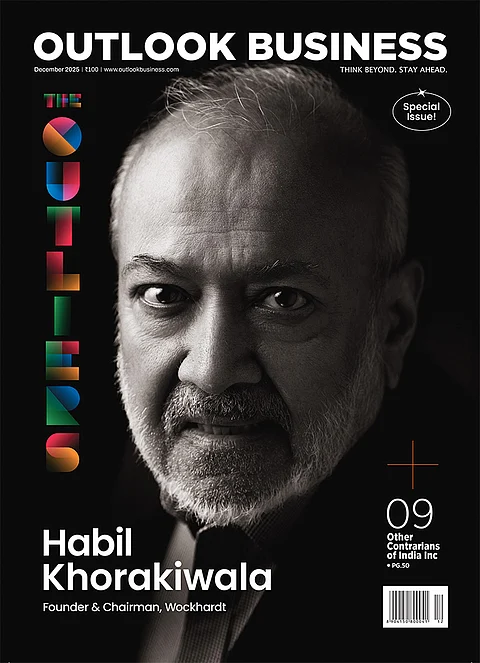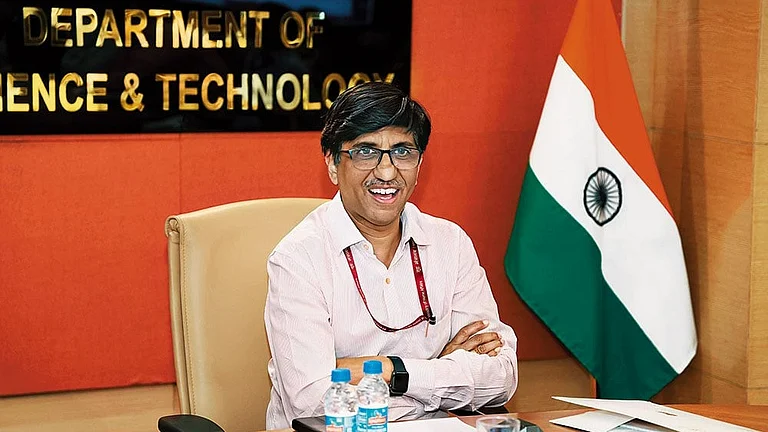What is the status of the Research, Development and Innovation (RDI) fund’s operationalisation?
We are preparing implementation guidelines and special financial rules. In fact, the Cabinet approved that liberalised financial rules will be made specifically for this fund.
This fund will operate in a two-tier structure. We will not be investing directly in start-ups or corporations. Instead, the government will provide funds to second-level fund managers, who will then select the start-ups and companies for investment.
By routing the fund through professional fund managers, we expect that investments, evaluations, and disbursals will take place in a professional and non-bureaucratic manner. The government has consciously decided to maintain an arm’s length from actual investment decisions in private companies and start-ups, allowing professional fund managers to take those calls through their own technical and investment committees.
At the Department of Science and Technology (DST), our role will be limited to selecting the second-level fund managers, perhaps between three to ten in total. Each of these fund managers could potentially support 100 to 200 companies, making this one of the most transformative steps in the R&D ecosystem.
What criteria are being used to select the second-level fund managers for the RDI Fund, and how will this two-tier structure ensure that investments are channelled into R&D-intensive and sunrise sectors rather than routine corporate research?
When selecting the fund managers, we will look at two main criteria. First, they must invest in sunrise sectors identified by the government, such as clean energy, energy transition and security, artificial intelligence, deep tech (including quantum technologies, robotics, defence tech, semiconductors and chips), space technology, biotechnology and bio-manufacturing, pharmaceuticals and medical devices and the digital economy including digital and precision agriculture.
More sectors may be added later as needed. Second, the fund should not subsidise routine corporate R&D but should focus on R&D-intensive technologies.
For instance, in the energy sector, we would fund projects involving new battery chemistry or advanced energy-storage technologies, not standard solar-panel manufacturing. This fund is designed to serve as patient capital, with a lifespan of 50 years.
Individual loans may have tenures of 10–15 years depending on project requirements. It aims to support projects that have long gestation periods and high uncertainty such as gene therapy or new drug molecule discovery where private investors are often hesitant to participate.
The government’s primary goal is not merely financial return but to enable cutting-edge R&D companies to emerge from India over the next decade or so. The government has invested ₹1 lakh crore in this fund and expects that this capital will return after 50 years ideally more, but at least the principal amount. For instance, if ₹10,000 crore is given to a fund manager for 15–20 years, that capital can be recycled multiple times during the fund’s lifespan.
The key performance indicator (KPI) for this initiative is not the doubling of money but the creation of globally competitive, R&D-driven companies and the catalysation of private investment potentially ten times the government’s contribution by taking the initial risk and encouraging venture and growth capital participation. For corporate projects, government funding will be limited to 50% of the total cost, with the remaining 50% to be raised from commercial or private sources.
Thus, if the government invests ₹1 lakh crore, we expect an equal or greater amount from the private sector, with further private investment coming in later stages for scaling up. DST will select and supervise the fund managers but will not interfere in their individual investment decisions.
We will provide broad implementation guidelines specifying the thematic focus areas, the need for projects to be R&D-intensive, and the requirement that technologies be at least at Technology Readiness Level (TRL) 4 and above meaning they have moved beyond basic research into early prototype or validation stages. DST and other scientific departments already fund basic research (TRL 1–3), while private industry typically supports commercial projects (TRL 7–9).
However, there exists a “valley of death” between TRL 4–6, where prototypes exist but are not yet market-ready. Private-venture capitalists often hesitate to invest at this risky stage. This fund specifically aims to bridge that gap by providing patient, risk-tolerant capital to projects at TRL 4–6, the most critical stage for translating research into viable technologies.
In summary, this initiative marks a major reform in India’s R&D financing ecosystem, shifting from a grant-based approach to a professionally managed, long-term capital model that will help build globally competitive, deep-tech enterprises from India.
India has traditionally taken a conservative stand on intellectual property rights (IPR) to protect access to generics. Has this limited innovation?
Maybe that was the situation earlier, but it’s not like that anymore. There is now significant awareness about IPR creation both in our academic institutions and industry.
In fact, if you look at patent filings, India now ranks around sixth or seventh globally, which is a big improvement. Similarly, our position in the Global Innovation Index has improved substantially from about 10 years ago [when] we were ranked 81st, and today we are 38th.
The Global Innovation Index is based on 65 parameters, and one of them is intellectual property including patents, trademarks and related indicators. So clearly, there has been strong progress in recent years, and the trajectory continues upward.
Even in terms of scientific and engineering publications, India now ranks third in the world after China and the US. We used to be around seventh or eighth a decade ago. Likewise, in patent rankings, we’ve moved up from around 14th or 15th position to about seventh. I’m quite confident that in the next few years, India could reach third or fourth place in terms of patent filings.
A large part of this growth is driven by start-ups, which are inherently innovation-based and therefore need to protect their IP through patent filing. There’s also significant awareness in our premier academic institutions: IITs, IISc, NITs about the importance of patents.
For instance, IIT Madras ranked number one last year in India in patent filings, with around 400–500 patents filed. This shows how academic institutions are now actively protecting intellectual property.
Earlier, say 15 years ago, institutions would focus mainly on publishing papers or producing PhDs, without much emphasis on filing patents. But now, there’s a strong push toward converting research into patentable technologies and ensuring that intellectual property is well protected not just by start-ups or companies, but also by academia.
Globally, professors often become successful entrepreneurs. How can Indian academia be restructured so that researchers and faculty can pursue entrepreneurship without leaving their academic roles?
We already have such mechanisms in place. In fact, most premier academic institutions now have a faculty entrepreneurship policy.
Under this policy, faculty members are allowed to set up their own start-ups within the incubators housed in these institutions.
Many of these incubators are supported by the DST [Department of Science and Technology]. Several premier IITs also allow faculty members to take one- or two-year leave to work full-time on their start-ups.
From November 3–5, we are bringing together stakeholders from the government, academia and industry at an emerging science, technology and innovation conclave in Delhi.
The key challenge for deep-tech start-ups, however, remains the availability of patient capital and venture funding. In places like Silicon Valley, it’s much easier for a Stanford professor to access such funding but that’s still limited here.
One encouraging step in this direction is the government’s proposed RDI Fund, which aims to catalyse venture funding for deep-tech start-ups. Hopefully, this will help address the capital gap.
China has successfully run large-scale programmes like the '10,000 Talents Plan' to bring back its scientific diaspora. Does India have similar strategies?
We’ve actually been doing this for the last five years, though on a smaller scale. The DST had launched the Vajra Fellowship, which invited foreign researchers including non-Indians to spend around two months in Indian academic institutions and collaborate on research.
Later, we started the Vaibhav Fellowship, which specifically targets the Indian diaspora rather than foreign nationals. Under this programme, individuals from the diaspora can come and work in Indian academic or research institutions for a minimum of two months over a period of three years, though they can stay longer.
So far, we have selected 36 Vaibav fellows since the programme began two years ago.
Now, there have been broader discussions about expanding this model to bring in a larger number of scientists and faculty members from abroad who can spend two to five years here, or even be permanently absorbed into our system. This idea has been under consideration, and it was decided that the Ministry of Education and the Department of Higher Education will take the lead in launching a comprehensive scheme to attract such talent.
The objective is to bring back Indian-origin scientists and faculty from countries like the US and other advanced economies, and place them in our academic institutions, universities, or research labs under DST, DBT, CSIR and ICMR.
I have personally been part of these discussions, along with the Secretary of Higher Education and the Principal Scientific Adviser. The scheme has been finalised and may be announced soon. It will be anchored by the Department of Higher Education, since the number of potential host institutions and universities under them is much larger compared to the limited number of research labs under DST.
Deep-tech start-ups, especially in space and defence, often worry whether their capital-intensive innovations will be fully utilised. How can DST or other initiatives better link academic research with start-ups to address this concern?
I think there are two separate issues here. One is linking academic research with start-ups, which DST has been actively working on. For example, under the National Mission on Cyber-Physical Systems, we have set up Section 8 companies [non-profits] across about 25 academic institutions.
The second issue is the market for deep-tech products. Start-ups often develop advanced technologies, but a key question remains: who will buy them? For many deep-tech sectors, especially defence, the government is often the primary buyer.
To address this, one focus is demand aggregation: creating a market for indigenous technology and giving preference to Indian-developed products. When a start-up develops a highly competitive product, the government ensures that it finds buyers. This prevents start-ups with advanced technology from failing simply due to a lack of market.
The government’s priority is to both develop indigenous technology and ensure that once the technology is ready, it is adopted and deployed widely within the country. This emphasis on supporting Made-in-India technology has been highlighted by the Prime Minister and will continue to be a focus going forward.
India’s private sector invests very little in R&D compared to China and the US. Capital expenditure has also lagged for years. Do you think India’s current tax and incentive structures are sufficient to motivate companies to invest more in R&D?
This fund can actually be viewed as an incentive for R&D, instead of relying solely on tax benefits. Under this scheme, if a company invests in R&D, the fund can cover 50% of the project cost. For example, if a corporate proposes a ₹1,000 crore R&D project and commits ₹500 crore, the fund can provide the remaining ₹500 crore at a very low interest rate, say 3%, as an unsecured loan. If the project fails, the company has no further obligation.
This approach is considered better than traditional tax incentives, which often face accounting loopholes and ambiguity about what qualifies as R&D. Here, companies submit a project proposal detailing the exact R&D work they intend to pursue.
To ensure the fund is not dominated by large corporates, certain allocation limits and criteria are in place. The fund cannot be used to subsidise routine R&D; it is strictly for cutting-edge research.
Decisions on fund allocation of how much goes to deep-tech start-ups versus corporates are made dynamically by an executive council, based on annual budgetary support. This ensures that start-ups and corporates both benefit, while the fund remains focused on genuine research, development and innovation.
Can you provide an update on the Quantum Mission and highlight its key developments so far?
In the Quantum Mission, we have four verticals: quantum computing, quantum communications, quantum sensing and quantum materials and devices. Correspondingly, we have set up four hubs: the quantum computing hub at IISc Bangalore, the quantum communications hub at IIIT, the quantum sensing hub at IIT Bombay, and the quantum materials hub at IIT Delhi.
Each hub comprises about three to four technical groups, which are collaborations of multiple institutions. In total, there are 14 technical groups spanning 43 institutions.
The mission has defined specific deliverables for each vertical. For instance, in quantum computing, the long-term goal is to develop a 1,000-qubit quantum computer within eight years, with intermediate targets in the next five years.
In quantum communications, the aim is to demonstrate quantum-secure communication links, while quantum sensing focuses on high-resolution quantum sensors. Each hub brings together complementary expertise from the participating institutions.
In addition to research, the mission also supports start-ups. So far, we have supported eight start-ups, with funding ranging from ₹1 crore to ₹25 crores. Like the India AI Mission, the National Quantum Mission has a rolling call for start-up applications, ensuring continuous support.
A third aspect of the mission is capacity building. We are supporting engineering colleges and institutions to set up quantum teaching labs, enabling undergraduate programs or minor courses in quantum technologies.
AICTE has approved this initiative, and around 75 to 100 labs across engineering colleges and universities will be supported. To build faculty expertise, we are also running faculty development programmes, training instructors in quantum programming and technologies.
So overall, the mission is focused on three key areas: research and technology development, start-up support and capacity building.
Start-ups funded through the RDI Fund are required to bring 50% of their funding from external sources. However, a major issue is that some of the most promising start-ups end up shifting their headquarters abroad.
In the case of the RDI Fund, we have made it clear that the start-ups must be Indian companies. Their global headquarters should be in India and the company should be controlled by resident Indians. They are allowed to receive investment from abroad, but control must remain with resident Indians, and their IP should be registered in India.
Regarding concerns about founders exiting or selling the company in the future; for example, a start-up developing advanced jet engine technology that India needs for next-generation applications, the current guidelines do not address all such scenarios in detail. The primary goal for now is to develop indigenous technology and protect it, particularly when public funds are involved.
The guidelines currently ensure that companies are controlled by resident Indians, have IP in India and maintain their global headquarters in India. We have not yet imposed conditions preventing a sale or exit after a certain period, such as five or ten years.
Such conditions may be considered on a case-by-case basis, especially for start-ups with strategic or security-critical technologies. For these highly sensitive cases, it might be required that the start-up cannot be acquired by foreign entities, even after years.
For other start-ups, these restrictions may not apply. The approach is flexible, depending on the strategic importance of the technology and the start-up’s potential impact.
Some space-tech start-ups seem to be highly dependent on the Indian Space Research Organisation's (Isro) infrastructure. How is this dependency being addressed to help them scale and innovate independently?
In DST, over the past 10 years, we have been funding incubators through schemes like Nidhi-Prayas and others. However, starting from the next financial year, we have decided that these programmes will no longer support general incubators and start-ups in the usual way, as other supports, like the RDI Fund, are now available. Instead, the focus will shift to creating centralised prototyping, fabrication, testing and certification facilities for deep-tech start-ups.
The plan is to establish three to five domain-specific facilities within existing incubators, equipped with advanced, high-cost equipment that deep-tech start-ups cannot afford individually. These facilities will serve multiple sectors, not just space, but also biotech, robotics, drones and more. Start-ups and MSMEs can access these services by paying a small usage fee.
This approach addresses a universal challenge faced by deep-tech start-ups: access to expensive, sophisticated equipment. For example, an advanced electron microscope costs several crores, making it impossible for individual start-ups to purchase. By setting up these centralised facilities in identified incubators within academic institutions, DST aims to provide start-ups with the resources they need to prototype, test and fabricate, thereby enabling faster innovation and commercialisation.












